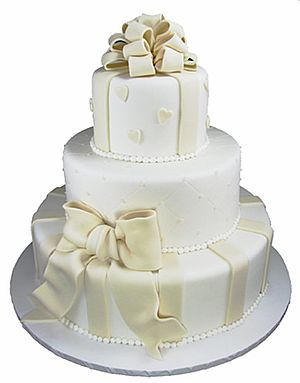Is your mouth watering? Mine is!
I ate this dessert at a Christmas party I was lucky enough to be invited to. The friend who bought these had to stand in line at a famous sweet shop for a very long time.
It was so nice to taste fresh raspberries again. I always associate raspberries with Christmas because in New Zealand it falls in summer. Sometimes we spent the holiday season on my sister-in-law's farm, where there was a huge patch of raspberry bushes. On Christmas morning, after opening the presents, someone would go out to the raspberry patch and pick a huge bowl of fresh raspberries to have with Christmas dinner.
I'm often asked, "what do you cook?" or "what do you eat?" My Japanese friends are curious about what a foreigner might eat, and my NZ/Australian friends know I'm a bit of a foodie and wonder what I'm cooking up in Japan. So here it is: a strange mix of Japanese and Kiwi cuisine seasoned with a little of my own creativity...
tracking code
Friday, January 28, 2011
Tuesday, January 25, 2011
MORE CRACKERS IN JAPAN

Seriously, Japanese crackers are amazing. These elegant little packages contained nothing short of art! More evidence that in Japan food is an art form!
I suppose the 'crackers' on the right were technically dried vegetable chips. Whatever. Among other things there were was mushroom, sweet potato, green bean, lotus root, and burdock root.
This packet included shrimp, crab, and seaweed flavors. Usually black color means back sesame flavor, but since this packet had a seafood theme perhaps it was squid ink...
As for the last packet, the black cracker has the same kind of seaweed used for sushi. The largest cracker had sugar crystals on it, not salt, and I have no idea what flavor the others are, but they all tasted delicious.
Sunday, January 23, 2011
DUMPLING SOUP
I posted about edible chrysanthemum leaves a while ago. Here's a picture of gyouza soup made with chrysanthemum leaves. Gyouza are Chinese dumplings. In Japan they are usually fried then steamed, but they're great in soup too. The soup is flavored with soy sauce and has a dash of lemon juice or rice vinegar, and a dash of sesame oil... or even better, rayuu -chili flavored sesame oil. Delicious!
Related articles
- Shungiku (cathysfoodadventures.blogspot.com)
Saturday, January 22, 2011
CARROT CAKE
Carrot cake is popular in New Zealand. It probably comes in third after those other perennial favorites, chocolate cake and banana cake. I used to make carrot cake quite often, using wholemeal flour and always adding cinnamon and raisins. The traditional topping is cream cheese icing but I think prefer lemon or orange butter icing. Good carrot cake should be moist and soft. Once I tried out my carrot cake recipe with daikon. The result was ... interesting. Not horrible. I prefer carrot cake.
I haven't seen many carrot cakes in Japan, but maybe I just go to the wrong cafes. The carrot cake in the photo was a gift from my friend. I have really nice friends! It was every bit as good as it looks.
Related articles
- Carrot Cake, Where Did It Come From? (notecook.com)
Sunday, January 16, 2011
EXPERIMENTS WITH HOT WINE

The first time I had delicious hot mulled wine was when I went to the Czech Republic over New Year. Vendors on the streets of Prague were selling it in paper cups. It's a wonderful warming winter drink, and also has a nice festive feel.
Naturally I tried to make it at home. I boiled some cinnamon sticks, sugar, and orange and lemon slices in water, then tossed in a bottle of cheap red wine. Do you know what happens when you heat alcohol? Heady fumes rapidly filled my kitchen as the alcohol evaporated, and set off the alarm of my gas detector! Even with the doors and windows wide open, it took ages for the fumes to clear.
Not wishing to repeat that episode, I wondered if I could just pour the wine into the hot liquid before drinking, just as you add milk to tea or coffee. That worked well. Even a quite small amount of wine seems stronger when it's heated.
Then my lazy streak kicked in. The hot wine I drank in Prague was not spiced, so I wondered whether wine, sugar, and hot water would make a good drink. It does! I also tried heated orange juice laced with red wine (tastes great but looks murky and unappealing) and hot lemon tea with red wine (very nice.) If you really want the spice and citrus flavors, a shake of cloves or cinnamon and a slice of lemon will do the job.
Give it a try - it's delicious!
Friday, January 14, 2011
WEDDING CAKES
 Image via WikipediaI've been to two weddings in Japan. They weren't so different from weddings back home, except that they seemed rather more formal and lavish. Many young Japanese couples just have Western style weddings these days, and there are lots of "chapels" around Japan with hired-for-the-day Caucasian "ministers" (often just actors.) But some couples have both a Western and a traditional Japanese ceremony (probably at twice the expense, not to mention all that exhausting effort!)
Image via WikipediaI've been to two weddings in Japan. They weren't so different from weddings back home, except that they seemed rather more formal and lavish. Many young Japanese couples just have Western style weddings these days, and there are lots of "chapels" around Japan with hired-for-the-day Caucasian "ministers" (often just actors.) But some couples have both a Western and a traditional Japanese ceremony (probably at twice the expense, not to mention all that exhausting effort!)But this post is not about ceremonies, it's about wedding cakes. The weddings I attended had fairly standard looking wedding cakes, grand white tiered affairs. Someone told me that like the "ministers" they are hired rather than bought! I don't know if that's true, but I do know that the rich heavy fruitcake that is the traditional wedding cake (and Christmas cake) of countries with a British Heritage, like New Zealand, is almost unknown in Japan. Fortified with brandy or some other strong spirit, the cake can be kept for long periods of time. So the quaint custom of keeping your wedding cake's top tier for your first baby's christening or your first anniversary is not as shocking as it sounds. The flavor of the cake actually improves. I know this is true, because I followed this custom.
A little while ago my friend Sachiko brought me some traditional Japanese wedding cake. It was sweet adzuki beans covered with two layers of mochi, one white and on pink. A combination of red and white signifies celebration in Japan.
Although I like traditional Japanese sweets very much, I'd take a rich fruit wedding cake any day.
I love rich fruit cake!
Related articles
- Wedding cakes around the World (brighthub.com)
Labels:
fruit cake,
Japanese,
traditions,
wedding cake
Tuesday, January 4, 2011
GINGERBREAD MOCHI
Mochi is rice cake, made by pounding cooked mochi rice till it is sticky and glutinous. It can be cooked a number of different ways, for example, in soup, or toasted over a wire grill, and with many different accompaniments such as kinako (nutty flavored toasted soybean flour), or sweet red bean jam. Soft mochi is sometimes sweetened to make little Japanese style cakes, but in winter and around New Year plain unsweetened mochi can be bought for zenzai (made from sweet red bean jam, zenzai is the delicious Japanese counterpart for hot chocolate with marshmallows), toasted mochi, and a traditional New Year soup called zoni.
Sometimes I like to experiment by combining Japanese ingredients with Western tastes. Here is one of my experiments, putting a new spin on a Japanese New Year classic. Toast some squares of plain mochi till puffed and golden brown. Immerse them in simmering water for about a minute, then roll in a mixture of kinako, kurozato (dark brown sugar), a generous amount of dried ginger, and some chopped toasted almonds. The flavor is like gingerbread. Eat while it's warm, but be careful... every year a few Japanese choke to death on mochi! I recommend taking small bites and chewing well (which is what you ought to do anyway, right?)
 |
| New Year mochi at Fushimi Inari Shrine in Kyoto |
Related articles
Monday, January 3, 2011
JAPANESE NEW YEAR FOOD
I know I should have done this post on New Year's Day but the truth is, I'm not the most organized person around.
Just as Western people have lots of special traditional Christmas food, in Japan they have lots of special New Year food. One of the things they eat is called osechi ryouri. For more than a thousand years Japanese people have prepared a variety of beautifully presented delicacies with special traditional meanings to be eaten on the first three days of the year.
I'm told that not many people make their own these days. Instead people spend a lot of money (typically hundreds of dollars) buying osechi ryouri. I consider myself very lucky to have been invited to friends' houses to eat gorgeous osechi ryouri three time now! The osechi ryouri in the photos was home-made too, by my friend's father, who enjoys cooking as a hobby now that he is retired.
Just as Western people have lots of special traditional Christmas food, in Japan they have lots of special New Year food. One of the things they eat is called osechi ryouri. For more than a thousand years Japanese people have prepared a variety of beautifully presented delicacies with special traditional meanings to be eaten on the first three days of the year.
I'm told that not many people make their own these days. Instead people spend a lot of money (typically hundreds of dollars) buying osechi ryouri. I consider myself very lucky to have been invited to friends' houses to eat gorgeous osechi ryouri three time now! The osechi ryouri in the photos was home-made too, by my friend's father, who enjoys cooking as a hobby now that he is retired.
Related articles
- Be Fortunate this New Year: Eat the Lucky Foods! (friendseat.com)
- Two-color namasu, a make-ahead daikon radish and carrot salad (justbento.com)
Subscribe to:
Posts (Atom)

















